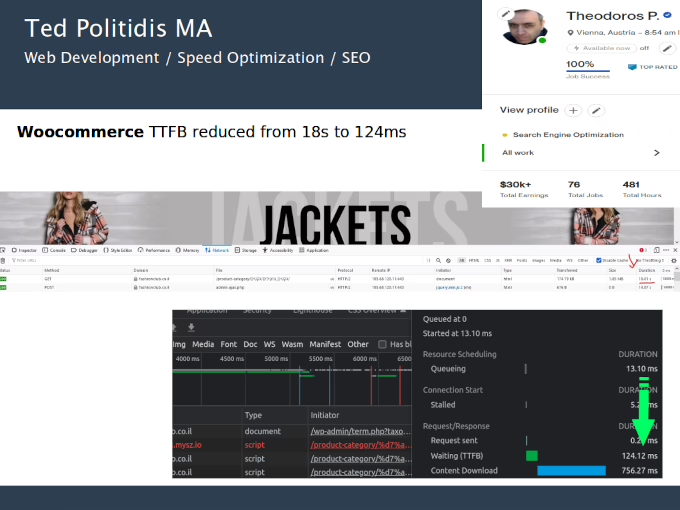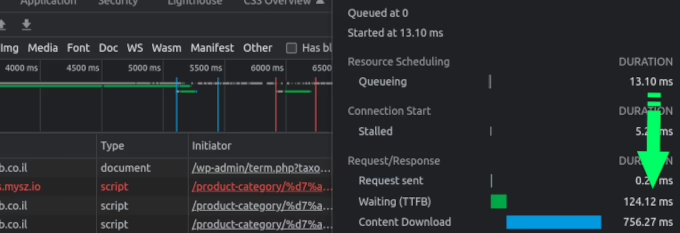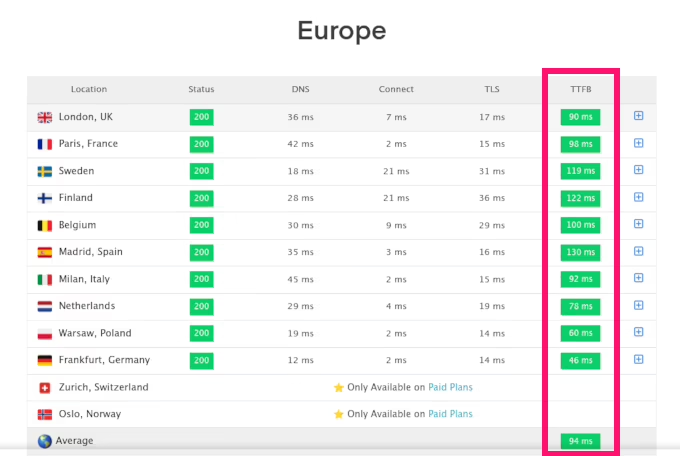The acronym TTFB represents “Time To First Byte.” It describes how long it takes a web server to transfer the first byte of data in response to a request from a client (such a web browser). The time it takes for the server to receive, process, and begin returning the request to the client is included in this measurement. Because it shows how quickly the server can begin sending content to the user, TTFB is a crucial performance indicator for websites and web apps.
Get Help
Where Do TTFB Problems Stem from
- Server Performance: Overloaded servers or slow server hardware can greatly increase TTFB. The server can have trouble responding to requests rapidly if it is underpowered or seeing a lot of traffic. Note that this reason is more inclusive than the title says. In many cases developers and tools will give this generic reason but they will mean it’s a script problem i.e. Your WordPress Installation. I can fix any problem that is rooted in your server or WordPress installation.
- Network Latency: Longer TTFB times can be caused by a number of factors, including network congestion, routing problems, and the physical distance between the client and the server. For example it takes longer to reach a server located in a different continent than in your country. The time it takes for a request to get to the server and for the client to get the server’s answer can both be impacted by slow network connections or high latency. I have a solution for distant servers.
- Server Configuration: Longer TTFB times can be caused by inefficient server configurations, such as incorrectly configured caching methods or poorly optimized web server software. TTFB can be decreased with the aid of caching techniques and server optimization. I fix all server problems.
- Database Performance: If a web application relies heavily on database queries to generate content, slow database performance can increase TTFB. This can occur if the database is not properly indexed, if queries are inefficient, or if the database server is underpowered. Here is the link to optimize the database.
- Content Size and Complexity: TTFB may also be impacted by the volume and complexity of the content being provided and mainly talking about the scripts here. The length of time it takes the server to develop and send a response might be affected by large files, intricate dynamic content creation procedures, or a large number of external dependencies (such external stylesheets, scripts, or APIs).
- Content Delivery Networks (CDNs): By caching content closer to consumers, CDNs can enhance overall website performance; but, they can also result in more network hops and processing overhead, which in certain situations may increase TTFB. I don’t use CDNs the last two years because modern servers and connections have caught up. That said I have additional solutions to speed up content delivery that are better than CDNs.
Fix Your TTFB
Latency minimization on any page and product pages/categories: Drops the TTFB from seconds to a couple hundred of ms. It usually lands around 150-300ms.



